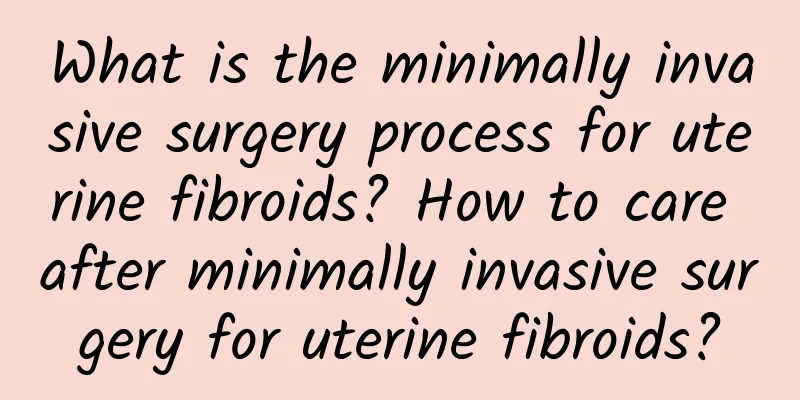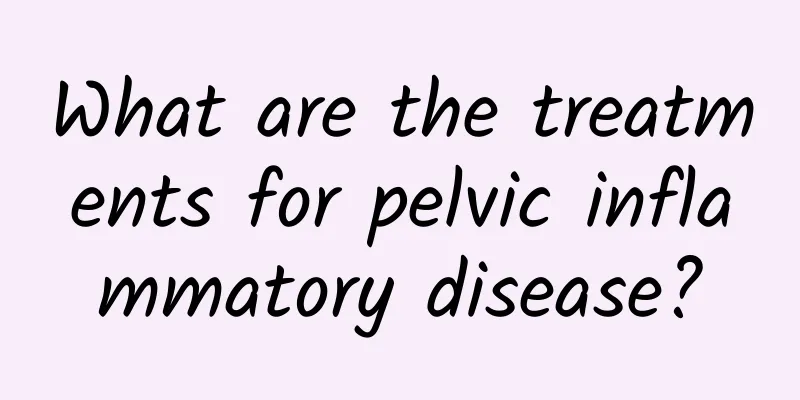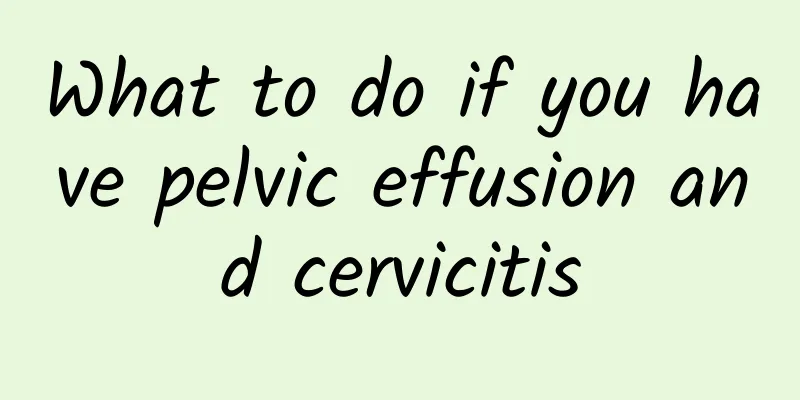What is the minimally invasive surgery process for uterine fibroids? How to care after minimally invasive surgery for uterine fibroids?

|
Due to years of clinical treatment, there are many effective treatments for uterine fibroids, and minimally invasive surgery is one of them. So, what is the minimally invasive surgery process for uterine fibroids, and how to care after surgery? There are many surgical methods for treating uterine fibroids. The following is one of the specific processes of minimally invasive treatment: The main surgery for minimally invasive treatment is uterine artery embolization (UAE). UAE cuts a one-meter-sized hole at the base of one side of the thigh, inserts a special catheter into the blood supply artery of the uterine fibroid, and uses embolic agents to block the blood supply of the fibroid, achieving the purpose of "starving" the fibroid to death. The operation time is short, the fastest is 30 minutes, and the general time is about 1 hour. It is completed under anesthesia and there is no pain during the operation. The postoperative reaction is mild, mainly manifested as mild and short-term pain in the lower abdomen and low fever. It is a normal reaction after surgery and can be cured after symptomatic treatment. The following methods should be followed for care after minimally invasive surgery for uterine fibroids: 1. Timely follow-up After being diagnosed with uterine fibroids, women should have regular follow-up examinations and take timely treatment measures according to the progression of the disease. 2. Balanced diet and reasonable nutrition. Patients should adjust their dietary structure, adhere to a low-fat diet, eat more grains, eat more fresh vegetables and fruits, avoid eating high-fat and spicy foods, and reduce the occurrence of uterine fibroids. 3. Actively take contraceptive measures and pay attention to menstrual health care. Artificial abortion may damage the cervix or uterus and increase the risk of uterine fibroids in women. Therefore, women should take contraceptive measures in their daily lives to reduce the number of abortions, thereby reducing the incidence of uterine fibroids. Uterine fibroids are not terrible, but patients should be treated as soon as possible. They can take symptomatic medication under the guidance of a doctor according to their actual situation. |
Recommend
Don't eat fat roast pork, choose low-calorie Matsusaka pork
The Mid-Autumn Festival, when the whole family ga...
Feed when crying to comfort preschool children who are overweight and prone to obesity
There are a lot of dragon sons and daughters this...
Analyze for you what are the main symptoms of cervicitis
Cervicitis is a very common disease in life, and ...
How to relieve pain in adenomyosis
How to relieve pain in adenomyosis? Patients with...
How to Identify Bacterial Vaginosis
How to scientifically identify and diagnose candi...
Does left lateral adnexitis affect pregnancy?
Left-sided adnexitis may affect pregnancy and nee...
Estrogen for the treatment of functional uterine bleeding in adolescence
Dysfunctional uterine bleeding in adolescence is ...
Analyze some causes of cervicitis for you
Nowadays, cervicitis is a common gynecological di...
Hidden worries! Survey: Yogurt = 11 sugar cubes
Health food is not healthy! Currently, there are ...
What kind of anti-inflammatory injection is good for uterine fibroids? Is anti-inflammatory medicine effective for uterine fibroids?
What kind of anti-inflammatory injection is good ...
Is pelvic peritonitis contagious?
Many female friends who suffer from pelvic perito...
Water lotus is high in fiber, low in calories and can prevent cancer? Nutritionist Zhao Hanying: The golden ratio of calcium and magnesium is a great sleep aid
99.9% of Taiwan's "water lotus" com...
A woman almost died after 1,500 needles of acupuncture and thread embedding caused suppuration
A middle-aged woman who runs a famous breakfast s...
Consequences of severe cervical erosion
The incidence rate of women with cervical erosion...
How to prevent spontaneous abortion?
How to prevent spontaneous abortion? Spontaneous ...









